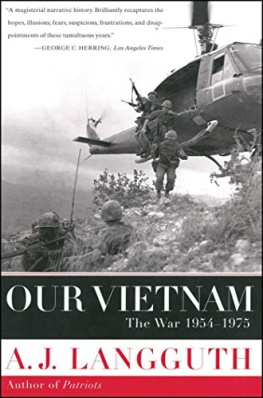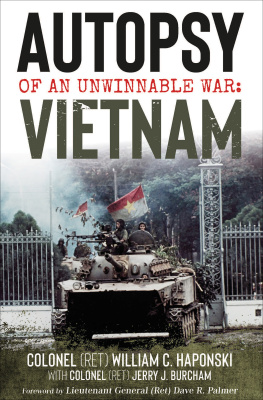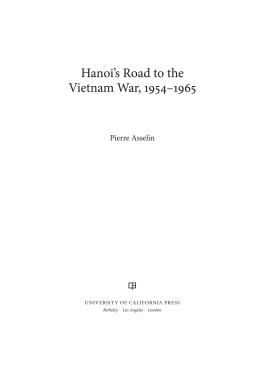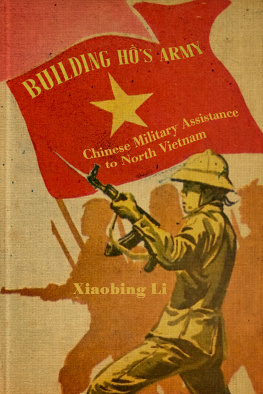
This edition is published by PICKLE PARTNERS PUBLISHINGwww.pp-publishing.com
To join our mailing list for new titles or for issues with our books picklepublishing@gmail.com
Or on Facebook
Text originally published in 1977 under the same title.
Pickle Partners Publishing 2016, all rights reserved. No part of this publication may be reproduced, stored in a retrieval system or transmitted by any means, electrical, mechanical or otherwise without the written permission of the copyright holder.
Publishers Note
Although in most cases we have retained the Authors original spelling and grammar to authentically reproduce the work of the Author and the original intent of such material, some additional notes and clarifications have been added for the modern readers benefit.
We have also made every effort to include all maps and illustrations of the original edition the limitations of formatting do not allow of including larger maps, we will upload as many of these maps as possible.
U.S. MARINES IN VIETNAM:
THE ADVISORY & COMBAT ASSISTANCE ERA, 1954-1964
BY
CAPTAIN ROBERT H. WHITLOW, USMCR
TABLE OF CONTENTS
Contents
TABLE OF CONTENTS
FOREWORD
This is the first of a series of nine chronological histories being prepared by the Marine Corps History and Museums Division to cover the entire span of Marine Corps involvement in the Vietnam conflict. This particular volume covers a relatively obscure chapter in U.S. Marine Corps historythe activities of Marines in Vietnam between 1954 and 1964. The narrative traces the evolution of those activities from a one-man advisory operation at the conclusion of the French-Indochina War in 1954 to the advisory and combat support activities of some 700 Marines at the end of 1964. As the introductory volume for the series this account has an important secondary objective: to establish a geographical, political, and military foundation upon which the subsequent histories can be developed.
The author is a Marine Reservist who was a member of the History and Museums Division from September 1972 until August 1974. Promoted to major soon after his return to inactive duty, he is now working for the Kentucky State Government. A native of Kentucky, he holds a Bachelor of Arts degree from Morehead State College (1965) and a Master of Arts degree in American History from the University of Kentucky (1972). Commissioned in 1965, Major Whitlow served as an infantry platoon commander with the 6 th Marines, an aerial observer with the 1 st Marine Division in Vietnam, and later as a platoon commander at Officer Candidate School, Quantico. For services in the Republic of Vietnam during 1967 and 1968 he was awarded the Distinguished Flying Cross and 26 awards of the Air Medal.
E. H. SIMMONS
Brigadier General, U.S. Marine Corps (Ret.)
Director of Marine Corps History and Museums
Reviewed and Approved:
15 September 1976
PREFACE
U.S. Marines in Vietnam, 1954 - 1964 is a narrative account of the initial decade of Marine Corps operations in South Vietnam. The monograph had two immediate forerunners, both classified studies prepared in the middle 1960s by the former Historical Branch, G-3 Division, Headquarters Marine Corps. Authored by Major James M. Yingling, Captain Harvey D. Bradshaw, and Mr. Benis M. Frank, the first of these was entitled United States Marine Corps Activities in Vietnam, 1954-1963. The second, entitled United States Marine Corps Operations in the Republic of Vietnam, 1964, was authored by Major Harvey D. Bradshaw. Although unpublished, these studies served as important sources for the material contained in this text. Otherwise, this history has been derived from official Marine Corps records, the Oral History Collection of the History and Museums Division, the comment files of the division, and appropriate historical works. Of particular value in its compilation have been the command diaries of the various Marine organizations involved.
Unfortunately, few official documents relative to either the early Marine advisory program or to the early operations of the Vietnamese Marine Corps still exist. Therefore, that portion of the text which deals with those areas has been reconstructed from interviews with various former Marine advisors. Even their generous assistance, however, has not completely overcome the dearth of documentary sources. Any reader possessing a knowledge of this period and subject is invited to submit pertinent comments to the History and Museums Division.
This monograph has not been the product of a single individuals labor. A comment draft of the manuscript was reviewed by over 40 persons, most of whom were directly associated with the described events. (A list of these contributors appears as Appendix E.) Their remarks have been of immense value in reconstructing with accuracy the origin, nature, and scope of the various Marine operations. The manuscript was prepared under the editorial direction of Mr. Henry I. Shaw, Jr., Chief Historian of the History and Museums Division. Final editing and the preparation of the index was done by Mr. Charles R. Smith of the Historical Branch. Miss Kay P. Sue, editorial clerk and manuscript typist for the division, performed valuable services in typing and proof reading both the comment and final drafts. Staff Sergeant Paul A. Lloyd and Sergeant Eric A. Clark, also members of the History and Museums Division, were responsible for preparing all maps and charts. Unless otherwise credited, photographs are from official Marine Corps files.

ROBERT H. WHITLOW
Captain, U.S. Marine Corps Reserve
PART ITHE WATERSHED
CHAPTER 1Background to Military Assistance
The Geographic SettingThe PeopleVietnams Recent HistoryPost-Geneva South VietnamThe American Response
The Geographic Setting
Hanging like a bulbous pendant from Chinas southern border, the South-east Asian land mass projects itself southward to within 100 miles of the equator. Often referred to as the Indochinese Peninsula, this land mass is contained by the Andaman Sea on the west, the Gulf of Siam on the south, and the South China Sea and the Tonkin Gulf on the east. Along with the extensive Indonesian island chain which lies to the immediate south, mainland South-east Asia dominates the key water routes between the Pacific and the Indian Oceans. So positioned, the Indochinese Peninsula and the offshore islands resemble the Middle East in that they traditionally have been recognized as a crossroads of commerce and history. {1}
Seven sovereign states currently make up the Indochinese Peninsula. Burma and Thailand occupy what is roughly the western two-thirds of the entire peninsula. To the south, the Moslem state of Malaysia occupies the southern third of the rugged, southward-reaching Malaysian Peninsula. East of Thailand lies Cambodia, which possesses a relatively abbreviated coastline on the Gulf of Siam, and Laos, a landlocked country. The Democratic Republic of Vietnam (North Vietnam), which borders to the north on China, and the Republic of Vietnam (South Vietnam) form the eastern rim of the Indochinese Peninsula.












